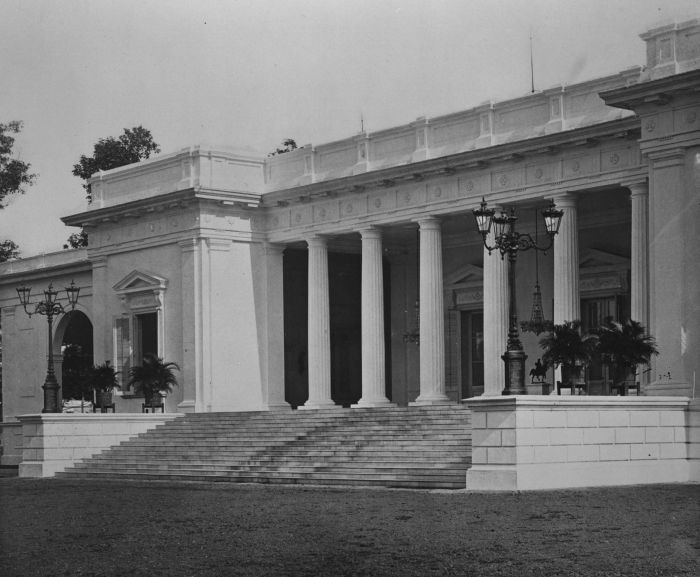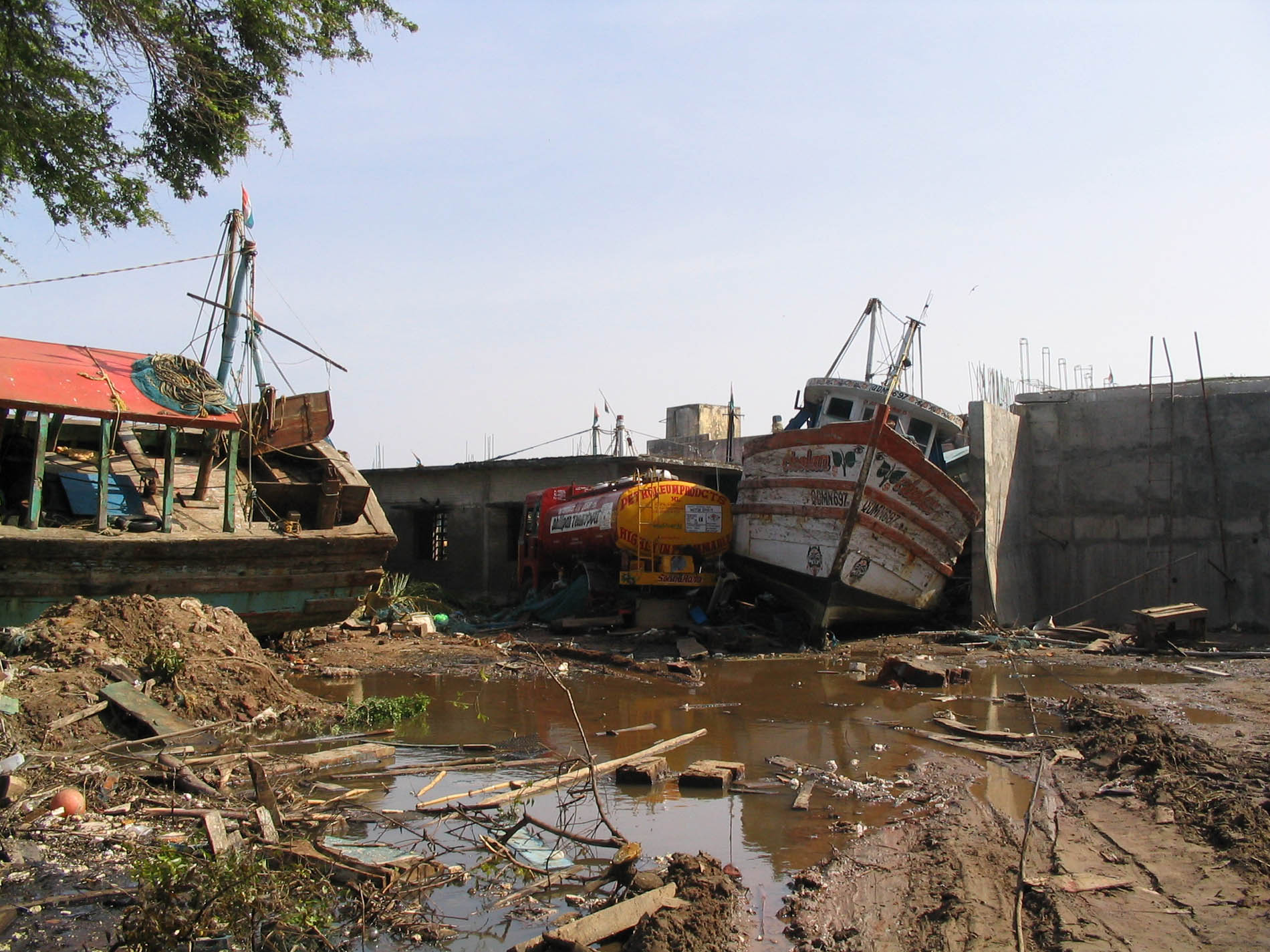|
Dirck Van Cloon
Dirck van Cloon (also Dirk and Theodoor van Cloon; 1684 – 10 March 1735) was Eurasian Governor-General of the Dutch East Indies. He died of malaria at the age of 50. He was born in Batavia sometime in 1684. For his education and training he was sent to the Netherlands. He graduated in Law at Leiden University on 1 April 1707. He returned to Batavia on the clipper ''Donkervliet'' and spent some time in Dutch Coromandel. He was among other things a district overseer in Sadraspatnam. He got into a fight with the governor of Coromandel, Adriaan de Visser, who accused Van Cloon of delivering bad quality goods. The government in Batavia sent Van Cloon back to the Netherlands, but he persuaded the Directors of the Dutch East India Company that de Visser was not to be trusted. Van Cloon was reinstated and he left for the Indies on 4 November 1719 on board the ''van de Huis te Assenburg'' as supercargo. In 1720, he became district chief at Negapatnam. In 1723, he became Governor ... [...More Info...] [...Related Items...] OR: [Wikipedia] [Google] [Baidu] |
List Of Governors-General Of The Dutch East Indies
This is a list of governors and colonial administrators of the Dutch East Indies. Governors Company appointed Government-appointed See also * Japanese occupation of the Dutch East Indies * President of Indonesia ** List of presidents of Indonesia * Prime Minister of Indonesia Footnotes Sources * External links Indonesia list of authority {{DEFAULTSORT:Governors General of the Dutch East Indies Governors-General of the Dutch East Indies, Lists of political office-holders in Indonesia Lists of Dutch colonial governors and administrators ... [...More Info...] [...Related Items...] OR: [Wikipedia] [Google] [Baidu] |
Dutch Coromandel
Coromandel was a governorate of the Dutch East India Company on the coasts of the Coromandel region from 1610, until the company's liquidation in 1798. Dutch presence in the region began with the capture of Pulicat from the Portuguese in Goa and Bombay-Bassein. Coromandel remained a colony of the Kingdom of the Netherlands until 1825, when it was relinquished to the British according to the Anglo-Dutch Treaty of 1824. It was part of what is today called Dutch India.De VOC site �Coromandel/ref> History In 1606, a Dutch ship stopped on the shores of the Karimanal Village near Pulicat, north of the mouth of the lake requesting water.Pandian p.131 Local Muslims offered food and help to the Dutch. They struck a trade partnership to procure and supply local merchandise to the Dutch for trade in the East Indies. Empress Eraivi, a wife of Emperor Venkata II of Vijayanagara, ruled ''Prelaya Kaveri'' and during her reign in 1608 the Dutch East India Company was given permission to ... [...More Info...] [...Related Items...] OR: [Wikipedia] [Google] [Baidu] |
Governors Of Dutch Coromandel
A governor is an administrative leader and head of a polity or political region, ranking under the head of state and in some cases, such as governors-general, as the head of state's official representative. Depending on the type of political region or polity, a ''governor'' may be either appointed or elected, and the governor's powers can vary significantly, depending on the public laws in place locally. The adjective pertaining to a governor is gubernatorial, from the Latin root ''gubernare''. Ancient empires Pre-Roman empires Though the legal and administrative framework of provinces, each administrated by a governor, was created by the Romans, the term ''governor'' has been a convenient term for historians to describe similar systems in antiquity. Indeed, many regions of the pre-Roman antiquity were ultimately replaced by Roman 'standardized' provincial governments after their conquest by Rome. Plato used the metaphor of turning the Ship of State with a rudder; the Latin w ... [...More Info...] [...Related Items...] OR: [Wikipedia] [Google] [Baidu] |
Governors-General Of The Dutch East Indies
The governor-general of the Dutch East Indies ( nl, gouverneur-generaal van Nederlands Indië) represented Dutch rule in the Dutch East Indies between 1610 and Dutch recognition of the independence of Indonesia in 1949. Occupied by Japanese forces between 1942 and 1945, followed by the Indonesian National Revolution until 1949. Indonesia proclaimed its independence on 17 August 1945. History The first governors-general were appointed by the Dutch East India Company (VOC). After the VOC was formally dissolved in 1800, the territorial possessions of the VOC were nationalised under the Dutch government as the Dutch East Indies, a colony of the Netherlands. Governors-general were now appointed by either the Dutch monarch or the Dutch government. During the Dutch East Indies era most governors-general were expatriate Dutchmen, while during the earlier VOC era most governors-general became settlers who stayed and died in the East Indies. Under the period of British control (1811 ... [...More Info...] [...Related Items...] OR: [Wikipedia] [Google] [Baidu] |
1735 Deaths
Events January–March * January 2 – Alexander Pope's poem ''Epistle to Dr Arbuthnot'' is published in London. * January 8 – George Frideric Handel's opera ''Ariodante'' is premièred at the Royal Opera House in Covent Garden, London. * February 3 – All 256 people on board the Dutch East India Company ships '' Vliegenthart'' and ''Anna Catherina'' die when the two ships sink in a gale off of the Netherlands coast. The wreckage of ''Vliegenthart'' remains undiscovered until 1981. * February 14 – The ''Order of St. Anna'' is established in Russia, in honor of the daughter of Peter the Great. * March 10 – The Russian Empire and Persia sign the Treaty of Ganja, with Russia ceding territories in the Caucasus mountains to Persia, and the two rivals forming a defensive alliance against the Ottoman Empire. * March 11 – Abraham Patras becomes the Governor-General of the Dutch East Indies (now Indonesia) upon the death of Dirck van Cloon. ... [...More Info...] [...Related Items...] OR: [Wikipedia] [Google] [Baidu] |
1684 Births
Events January–March * January 5 – King Charles II of England gives the title Duke of St Albans to Charles Beauclerk, his illegitimate son by Nell Gwyn. * January 15 (January 5 O.S.) - To demonstrate that the River Thames, frozen solid during the Great Frost that started in December, is safe to walk upon, "a Coach and six horses drove over the Thames for a wager" and within three days "whole streets of Booths are built on the Thames and thousands of people are continually walking thereon." Sir Richard Newdigate, 2nd Baronet, records the events in his diary. * January 26 – Marcantonio Giustinian is elected Doge of Venice. * January – Edmond Halley, Christopher Wren and Robert Hooke have a conversation in which Hooke later claimed not only to have derived the inverse-square law, but also all the laws of planetary motion attributed to Sir Isaac Newton. Hooke's claim is that in a letter to Newton on 6 January 1680, he first stated the inverse-square law. * Februa ... [...More Info...] [...Related Items...] OR: [Wikipedia] [Google] [Baidu] |
Swedish East India Company
The Swedish East India Company ( sv, Svenska Ostindiska Companiet or ''SOIC'') was founded in Gothenburg, Sweden, in 1731 for the purpose of conducting trade with China and the Far East. The venture was inspired by the success of the Dutch East India Company and the East India Company, British East India Company. This made Gothenburg a European centre of trade in eastern products. The main goods were silk, tea, furniture, porcelain, precious stones and other distinctive luxury items. Trade with China saw the arrival of some new customs in Sweden. The Chinese cultural influence increased, and tea, rice, arrack (a drink made from fermented sap or sugarcane) and new root vegetables started appearing in Swedish homes. It grew to become the largest trading company in Sweden during the 18th century: a total of 132 expeditions were carried out with 37 different ships. The company folded in 1813; nevertheless, it left clear footprints that can still be seen in Gothenburg. Background ... [...More Info...] [...Related Items...] OR: [Wikipedia] [Google] [Baidu] |
Negapatnam
Nagapattinam (''nākappaṭṭinam'', previously spelt Nagapatnam or Negapatam) is a town in the Indian state of Tamil Nadu and the administrative headquarters of Nagapattinam District. The town came to prominence during the period of Medieval Cholas (9th–12th century CE) and served as their important port for commerce and east-bound naval expeditions. The Chudamani Vihara in Nagapattinam constructed by the Srivijayan king Sri Mara Vijayattungavarman of the Sailendra dynasty with the help of Rajaraja Chola I was an important Buddhist structure in those times. Nagapattinam was settled by the Portugal, Portuguese and, later, the Dutch under whom it served as the capital of Dutch Coromandel from 1660 to 1781. In November 1781, the town was conquered by the British East India Company. It served as the capital of Tanjore District (Madras Presidency), Tanjore district from 1799 to 1845 under Madras Presidency of the British. It continued to be a part of Thanjavur district in Independ ... [...More Info...] [...Related Items...] OR: [Wikipedia] [Google] [Baidu] |
Supercargo
A supercargo (from Spanish ''sobrecargo'') is a person employed on board a vessel by the owner of cargo carried on the ship. The duties of a supercargo are defined by admiralty law and include managing the cargo owner's trade, selling the merchandise in ports to which the vessel is sailing, and buying and receiving goods to be carried on the return voyage. The supercargo has control of the cargo unless limited by other contracts or agreements. For instance, the supercargo has no authority over the stevedores, and has no role in the necessary preparatory work prior to the handling of cargo. Sailing from port to port with the vessel to which they are attached, supercargos differ from factors, who have a fixed place of residence at a port or other trading place. History During the Age of Sail from the 16th to the mid-19th century, the supercargo was the second-most important person aboard a merchant ship after the captain. Sweden On ships of the Swedish East India Company (1731–1 ... [...More Info...] [...Related Items...] OR: [Wikipedia] [Google] [Baidu] |
Dutch East India Company
The United East India Company ( nl, Verenigde Oostindische Compagnie, the VOC) was a chartered company established on the 20th March 1602 by the States General of the Netherlands amalgamating existing companies into the first joint-stock company in the world, granting it a 21-year monopoly to carry out trade activities in Asia. Shares in the company could be bought by any resident of the United Provinces and then subsequently bought and sold in open-air secondary markets (one of which became the Amsterdam Stock Exchange). It is sometimes considered to have been the first multinational corporation. It was a powerful company, possessing quasi-governmental powers, including the ability to wage war, imprison and execute convicts, negotiate treaties, strike its own coins, and establish colonies. They are also known for their international slave trade. Statistically, the VOC eclipsed all of its rivals in the Asia trade. Between 1602 and 1796 the VOC sent almost a million Eur ... [...More Info...] [...Related Items...] OR: [Wikipedia] [Google] [Baidu] |
Adriaan De Visser
Adriaan is the Dutch and Afrikaans spelling of the given name Adrian. Before the 19th century the spelling Adriaen was also common, and people used the spelling interchangeably. Adriaan may refer to: People Artists *Adriaen Backer (1635–1684), Dutch portrait painter *Adriaen Cornelisz Beeldemaker (1618–1709), Dutch Golden Age painter *Adriaen de Bie (1593–1668), Flemish painter *Adriaan Bloemaert (c. 1609 – 1666), Dutch painter *Adriaen van Bloemen (1639 – c. 1679), Flemish Baroque painter, printmaker, draughtsman and engraver *Adriaan Bonsel (1918–2011), Dutch composer *Adriaen Brouwer (1605–1638), Flemish genre painter *Adriaen Frans Boudewijns (1644–1719), Flemish landscape painter *Adriaan van der Burg (1693–1733), Dutch painter * Adriaen van der Cabel (1631–1705), Dutch painter of the Dutch school *Adriaen Frans Boudewijns (1644–1719), Flemish landscape painter, draughtsman and etcher *Adriaen Collaert (c. 1560 – 1618), Flemish designer and engraver *A ... [...More Info...] [...Related Items...] OR: [Wikipedia] [Google] [Baidu] |







%2C_Hoorn.jpg)